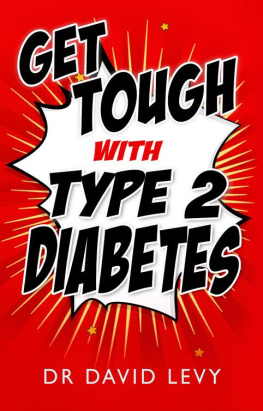
An Addicus Nonfiction Book
Copyright 2006 by Scott Isaacs, M.D., and Fred Vagnini, M.D. All rights reserved. No part of this publication may be reproduced, stored in a retrieval system, or transmitted in any form or by any means, electronic, mechanical, photocopied, recorded, or otherwise, without the prior written permission of the publisher. For information, write Addicus Books, Inc., P.O. Box 45327, Omaha, Nebraska 68145.
ISBN# 1-886039-73-9
ISBN# 978-1-886039-73-5
Updated 2009
Cover design by Peri Poloni-Gabriel
Illustration by Jack Kusler
Typography by Linda Dageforde
This book is not intended to serve as a substitute for a physician. Nor is it the authors intent to give medical advice contrary to that of an attending physician.
Library of Congress Cataloging-in-Publication Data
Isaacs, Scott, 1967
Overcoming metabolic syndrome / Scott Isaacs, Fred Vagnini.
p. cm. An Addicus nonfiction book. Includes index.
ISBN 1-886039-73-9 (alk. paper)
1. Metabolic syndromePopular works. I. Vagnini, Frederic J. II. Title.
RC662.4.I73 2006
616.39dc22
2005024962
Addicus Books, Inc.
P.O. Box 45327 Omaha, Nebraska 68145
www.AddicusBooks.com
Printed in the United States of America
1098765432
Contents
Acknowledgments
I would like to thank all my patients, past and present, for the knowledge they have given me about the multiple faces of metabolic syndrome, and for the privilege of being involved in their care. I would also like to thank my office staff: Kelli ONeil, M.S., R.D., L.D.; Janet Baldwin, R.N.; Jennifer Truda, Melva Baker, R.N., M.S., F.N.P.B.C.; Andrea Floyd; Deborah English; and Fran Ritter, R.N.
Also, an extra special thanks to my office manager, Jennifer Steady, without whose hard work and support this book would not be possible. I would also like to thank all the nurses in the diabetes units at Northside Hospital and St. Josephs Hospital for taking care of all my patients. I am also thankful to everyone at Addicus Books, especially Rod Colvin, for his faith in me and willingness to publish a book on this topic. I thank Todd Leopold for his editorial help.
Id like to thank my family, Howard Isaacs, Sheryle Isaacs, Lori Johns, and Chase Johns. Finally, Id like to thank my beautiful wife, Fiona Farrelly, who has helped me with every aspect of this book, including giving me the love and support to see this project through to completion.
Scott Isaacs, M.D.
M y sincere thanks to Rod Colvin of Addicus Books for allowing me to participate in this extremely important project. I have been working on insulin resistance over the last fifteen years and was pleased to have this opportunity to work on something that has now become an American epidemic. It also represents an opportunity for health care practitioners and patients alike to prevent the complications of cardiovascular disease, diabetes, and obesity. Special thanks to my coauthor, Scott Isaacs, and for the editorial help of Todd Leopold.
I would also like to thank all of my employees at the Heart, Diabetes, and Weight Loss Centers of New York for their commitment to excellence and their help in caring for the thousands of patients that I have seen over the last twenty-five years. Special thanks also to my wonderful daughters, Grace and Clare Vagnini, for their love and understanding in my work. Special thanks also go to the founders of the American Academy of Anti-Aging Medicine, Dr. Ronald Klatz and Dr. Robert Goldman, for allowing me to present my work at the American Academy of Aging meetings. They have had the foresight to realize that insulin resistance and metabolic syndrome represent a target area to prevent the degenerative aging process.
I would also like to thank David Bunnell, CEO and founder of LongLifeClub.com, for his interest in anti-aging medicine and for allowing me to present my work over the last few years.
Fred Vagnini, M.D.
Introduction
M etabolic syndrome could be considered the new silent epidemic, one of those conditions that affects many people but one that we dont hear too much about. As you will learn in this book, metabolic syndrome, a collection of interrelated disorders, affects millions of Americans. It is a primary contributor to our nations growing battle with heart disease, diabetes, and other serious diseases. Chances are you will be hearing more and more about metabolic syndrome in the media. Fortunately, as the syndrome affects more people, it is gaining increasing attention.
There is good news: you can overcome this syndrome. Theres no single cure, but there are ways to reverse it. Our hope is that this book will help you understand metabolic syndrome and develop strategies for escaping its grasp. Knowledge, followed by action, is the key to living a healthier, more active life.
Part 1
Understanding Metabolic Syndrome
He who has health has hope,
and he who has hope has everything.
Arabian Proverb
1
Metabolic Syndrome:
An Overview
P erhaps you have heard of metabolic syndrome. Or maybe youre like millions of others who have never heard of it. Certainly, it has not been a condition that grabs headlines like diseases such as cancer or coronary heart disease. But still, its a serious health condition. Without lifestyle changes and treatment, it increases your risk of an early death from a heart attack or a stroke.
How prevalent is metabolic syndrome? It is estimated that 55 million Americans have metabolic syndrome. Thats 27 percent of the population. Fortunately, metabolic syndrome is receiving more and more recognition as a serious medical condition, and more health professionals are diagnosing it.
What Is Metabolic Syndrome?
First, the term metabolism refers to the chemical and physical changes that take place within the body and enable its continued growth and functioning. A syndrome is a cluster of symptoms that characterize a specific disease or condition. However, metabolic syndrome is not actually a disease in the usual sense of the word; rather, it is a cluster of disorders. So, it would be technically inaccurate to refer to metabolic syndrome as having symptoms. Accordingly, to define it, we must look at the disorders or components that make up the syndrome.
You may have heard metabolic syndrome also being referred to by other names. It was called syndrome X in the years before the medical community fully understood the condition and the complex relationship between the disorders. It has also been referred to as insulin resistance syndrome, because insulin resistance is a core factor in the development of the condition.
Criteria for Metabolic Syndrome
There is some disagreement in the medical community over what constitutes metabolic syndrome; however, medical experts have established criteria of disorders that one must meet to be diagnosed with metabolic syndrome. Anyone with three or more of the abnormalities listed in the criteria is considered to have the syndrome.
- High fasting blood glucose. This means blood sugar, or glucose levels are high when tested after fasting but are not high enough to be classified as diabetes. High glucose levels are often a sign of insulin resistance, the bodys inability to use insulin efficiently.
- Abdominal obesity. Having fat around the belly, or central obesity, is a key risk factor.
- Low HDL cholesterol.
Next page











